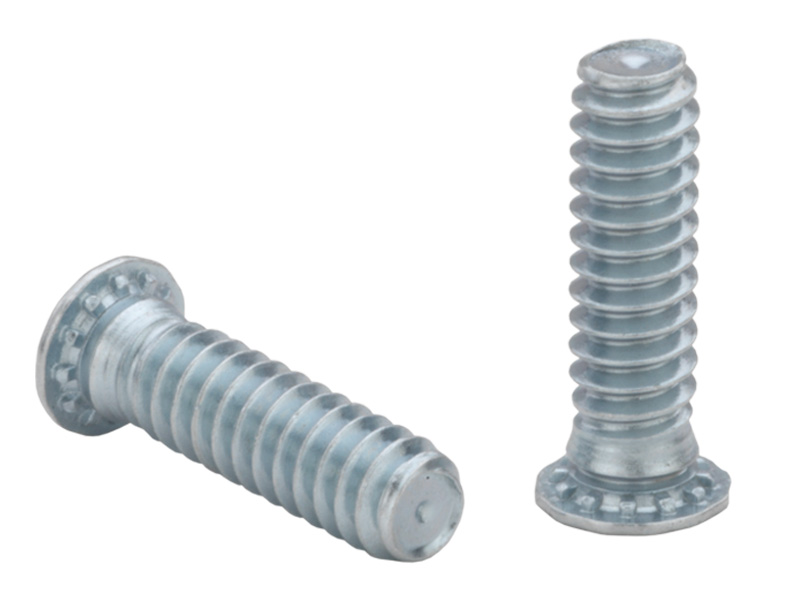
Table of Contents
Product Pages
Standoffs
KEYHOLE® Standoffs
SNAP-TOP® Standoffs
Nuts
Clinch Nuts
Floating Nuts
Blind Nuts
Flush Nuts
Locking Nuts
Rivet Nuts
Studs
Locating Pins
Captivated Screws
Simple Screws
Spring-Loaded Screws
Knob Cap Screws
Threaded Inserts
Press-In Inserts
Molded-In Inserts
Ultrasonic/Heat-Staking Inserts
Compression Limiters
Specialty Fasteners
Cable Tie Mounts
TACKPIN®
Panel-to-Panel Fasteners
Right Angle Fasteners
Attachment Technologies
Overview
Even simpler in form than general threaded nuts, a threaded stud is a permanent fixture with external threads which can be mated with a loose nut. The attachment side includes anti-rotation features such as knurls or a hexagonal head, informing whether round or hexagonal bar stock is used. Variations are available based on the material into which the stud is installed and the loading specifications of the application. This results in different features for flush heads, concealed heads, and extra strength studs.
Application
Focusing on one attachment style helps narrow the range of applications for a fastener as versatile as a stud. For example, concealed heads help satisfy cosmetic requirements in consumer electronics, such as video game consoles or other entertainment systems. A shallow, blind hole is milled into a metal panel and accepts the undercut of the concealed head while the knurls displace material into the undercut upon installation. This provides strong threads for mounting internal components while leaving the external surface untouched. It also aids in waterproofing and sealing applications that aim to keep liquids or dust from infiltrating the interior of the assembly. Clinch studs can even serve as male standoffs when paired with a metal or plastic spacer.


The concealed head stud can clinch into a panel without disrupting the cosmetics of the opposing side.

Cross-section of console housing with studs mounted directly to the enclosure.
Alternative Solutions
Given the cosmetic requirements for the external surface, any through-hole alternative is not feasible. While a welded stud eliminates milling in the panel entirely, the associated risks of weld spatter and asymmetry could lead to tolerance or quality problems within the assembly. However, one limiting factor of a concealed head stud is the minimum panel thickness required for a strong, self-clinching attachment. Thinner panels can use through-panel studs or bolts for greater strength while satisfying the cosmetic requirements by using a plastic outer shell. This allows for more aesthetic freedom of design, as seen in many video game consoles.
Common Attachment Technologies
While welding, self-clinching, and press-fit broaching studs are common, surface mounted (SMT) studs are rare since they would rely on the bond of the reflowed solder during loading rather than any geometric interference in PCB mounting. Another attachment method that functions independent of panel material is swaging. In this method, the stud is deformed rather than the panel to secure itself with a clamping load. Similarly, within the family of rivet nuts is the rivet stud, with a collapsible barrel for retention within a panel.
Relevant Products from PEM:
Explore a wide variety of studs in our Product Finder:
To learn more, visit the FH Datasheet, CH Datasheet for self-clinching, and K Datasheet for broaching options.
Have a project?
Let’s get started.
Talk to us about creating a custom part, tool or process. We are equipped to help you to take on and solve your biggest engineering challenges.
Talk to us about creating a custom part, tool or process. We are equipped to help you to take on and solve your biggest engineering challenges.

Looking for CAD Downloads?
Access to the original PEM Catalog and CAD downloads.
Have a question?
Talk to an Engineer.
See what’s possible.
Connect with a PEM® engineering expert today and discover a reliable, cost-effective fastening solution for your challenging applications.
Or Call Us: 1-800-342-5736











